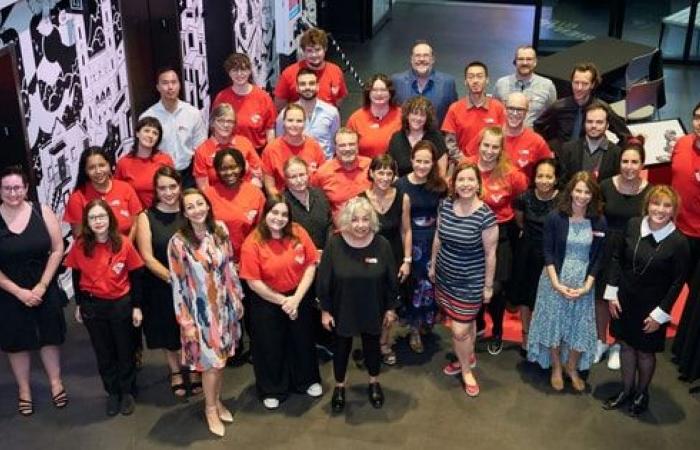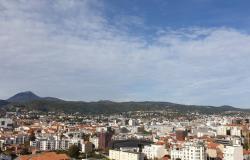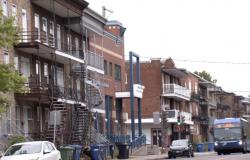As soon as we enter the MEM – Center for Montreal Memories, we realize that it is not a museum like the others. Or that maybe it’s not quite a museum after all. The MEM, reincarnation of the former Montreal History Center, is a museum space where the history of the metropolis is told through the stories of the humans who built it and who make it what it is today: a city where everyone has their place.
Where small stories are as important as big ones
We don’t go to the MEM to see an exhibition, we go there to have an experience. Exit the traditional chronological presentation of colonialism. Here, we are told about our convenience stores, an entrepreneurial project and an oasis of hope for immigrant families, the mythical Café Cleopatra and the role that its owner played in the flowering of the vie de Nuit of the 2ELQBTQI+ community or we highlight the contributions of PANDC through poems rooted in questions of identity, inclusion and belonging. Until 2025, you can also immerse yourself in the world of Montrealers with unique journeys at the immersive temporary exhibition Detoursthe result of a collaboration with Urbaniaor even put on a pair of shoes and listen to the story of the person who wore them as part ofA mile in my shoes, a project that promotes empathy at a time when humanity greatly needs it. From mid-June, the curious will also be able to discover the metropolis differently at the permanent exhibition.
Located at the corner of Sainte-Catherine Street and Saint-Laurent Boulevard, in the heart of the Quartier des spectacles, the MEM opened its doors to the public in September 2023. However, it has been the subject of deep reflection for more than a decade before that, when the team at the former Montreal History Center was working to develop an approach focused on shared civic memory. Starting in 2019, a committee of around sixty people focused on the approach and content, ensuring that the multiple facets of Montreal were represented.
“The objective was to create a citizen museum, where the small stories are as important as the big ones,” explains Annabelle Laliberté, head of division of the MEM and experienced consultant in museology. Today, there is no doubt: the MEM embodies this citizen will.
Humans as a marketing lever
However, how can we bring out the uniqueness of the MEM – what sets it apart from the many historical museums in Montreal – in communications and marketing?
According to Ms. Laliberté, the team has not yet finished exploring ways to convey the civic spirit in its campaigns. “The MEM is still young,” she recalls. We are in a year of learning where we are slowly taking our place and discovering who we are while trying to make ourselves known to the public.
One thing is certain, the name MEM – resulting from the combination of the first letters of the words memoir and Montrealers – is getting people talking, says the museologist. In an initial advertising campaign, it was cleverly used to promote the inauguration of the space, a successful initiative considering the 30,000 people who have visited the center since its opening.
“We had the challenge of calling ourselves “MEM”, a new name that no one knew and which, a priori, means nothing. In order to popularize it, we integrated it into various catchphrases like “MEM-tu?” or “Everyone MEM””. Juxtaposed with faces that illustrate the diversity of Montreal (obviously), these slogans could be read on billboards and wild posters, in bus shelters and social and digital campaigns.
However, what works best so far, according to Annabelle Laliberté, remains word of mouth. And it’s not that surprising. A survey carried out by the Léger firm reveals that when it comes to cultural or artistic activities, traditional media and recommendations from friends or family are the most credible sources of influence for all age groups.
“As the MEM is people-oriented, we rely heavily on community and citizen marketing, both creatively and strategically. And, as it turns out, what works best at the moment is community influence. These are people who bring people to us,” adds the division head. This is so much the better, given that the MEM, a municipal entity, has a relatively modest budget.
“We organize events and also benefit a lot from the help of our major partners like the Quartier des spectacles and Tourisme Montréal, in addition to knocking on the doors of various organizations, inviting them to tell their people about us. We try, in all our communications and our marketing, to show that we are everyone’s museum.”
AI and content creation
Training | AI and content creation
The great seduction of an elusive clientele
The clientele that the MEM targets is divided into six personas: 1) the super Montrealer who is looking for an experience far from clichés, contemporary and unique; 2) the history buff who seeks a rigorous and intellectual experience; 3) the activist who seeks an engaged, listening experience; 4) the emotional one who seeks a human and anecdotal experience; 5) the forager who is looking for a spontaneous, free and simple experience; and 6) have you seen me who is looking for a somewhat marginal and Instagrammable social experience. All Montrealers by residence or by heart.
“At the beginning, we were told a lot that we had to target tourists, but we kept saying that, no, not at all. The MEM was created by and for locals. Tourists who want to experience the real deal will find us. And it works because it is indeed the people here who recommend coming to see us.”
Each of the personas must be able to find their place at the MEM, whether in the temporary and permanent exhibitions or in the various cultural activities offered. Each of these personas is also at the heart of the museum’s communication strategy, in particular a series of newsletters featuring the different actors (architects, workers, curators, directors and others) who gave birth to the MEM . Again, an initiative that puts people first. But humans never cease to surprise us. If the MEM team expected to see the six typical profiles come through its doors, they expected much less that they would mainly be people aged 18 to 30.
“All museums are tearing their hair out to attract this clientele which is not at all natural for our environment. Well, we, I don’t know exactly how we get there yet, but that’s pretty much it.”
Is it because a third of the exhibitions are free that young adults flock to the MEM? In the current economic context, it is possible. But you only need to set foot there to see that its civic and conscientious approach undoubtedly also has something to do with it. This is what makes everyone – even those whom history too often tends to forget – feel at home there.









